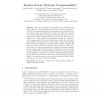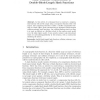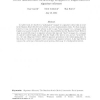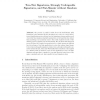135 search results - page 4 / 27 » Formal Indistinguishability Extended to the Random Oracle Mo... |
ASIACRYPT
2010
Springer
13 years 5 months ago
2010
Springer
This paper investigates the Random Oracle Model (ROM) feature known as programmability, which allows security reductions in the ROM to dynamically choose the range points of an ide...
FSE
2006
Springer
13 years 11 months ago
2006
Springer
Abstract. In this article, it is discussed how to construct a compression function with 2n-bit output using a component function with n-bit output. The component function is either...
TCC
2004
Springer
14 years 25 days ago
2004
Springer
In earlier work, we described a “pathological” example of a signature scheme that is secure in the Random Oracle Model, but for which no secure implementation exists. For that...
DAM
2006
13 years 7 months ago
2006
We propose the concept of fine-grained forward-secure signature schemes. Such signature schemes not only provide non-repudiation w.r.t. past time periods the way ordinary forward-...
PKC
2007
Springer
14 years 1 months ago
2007
Springer
We provide a positive result about the Fiat-Shamir (FS) transform in the standard model, showing how to use it to convert threemove identification protocols into two-tier signatur...




